We will look back on 2018 as the height of a golden era of airline travel. We sampled freshly squeezed juices from a linen-draped mimosa cart, dined on unique amouse-bouche treats and pretended we were all alone as we closed the compartment doors on our private business class suites.
This may seem like an ambitious forecast, but bare with me, the proof is in the tea leaves. We have reached peak airline, the point at which ambition and aspiration collide with economic reality. Enjoying your suite and shower service on an Emirates A380? Just remember those wood-paneled, velvet-lined flying boats that used to dock at La Guardia Airport.
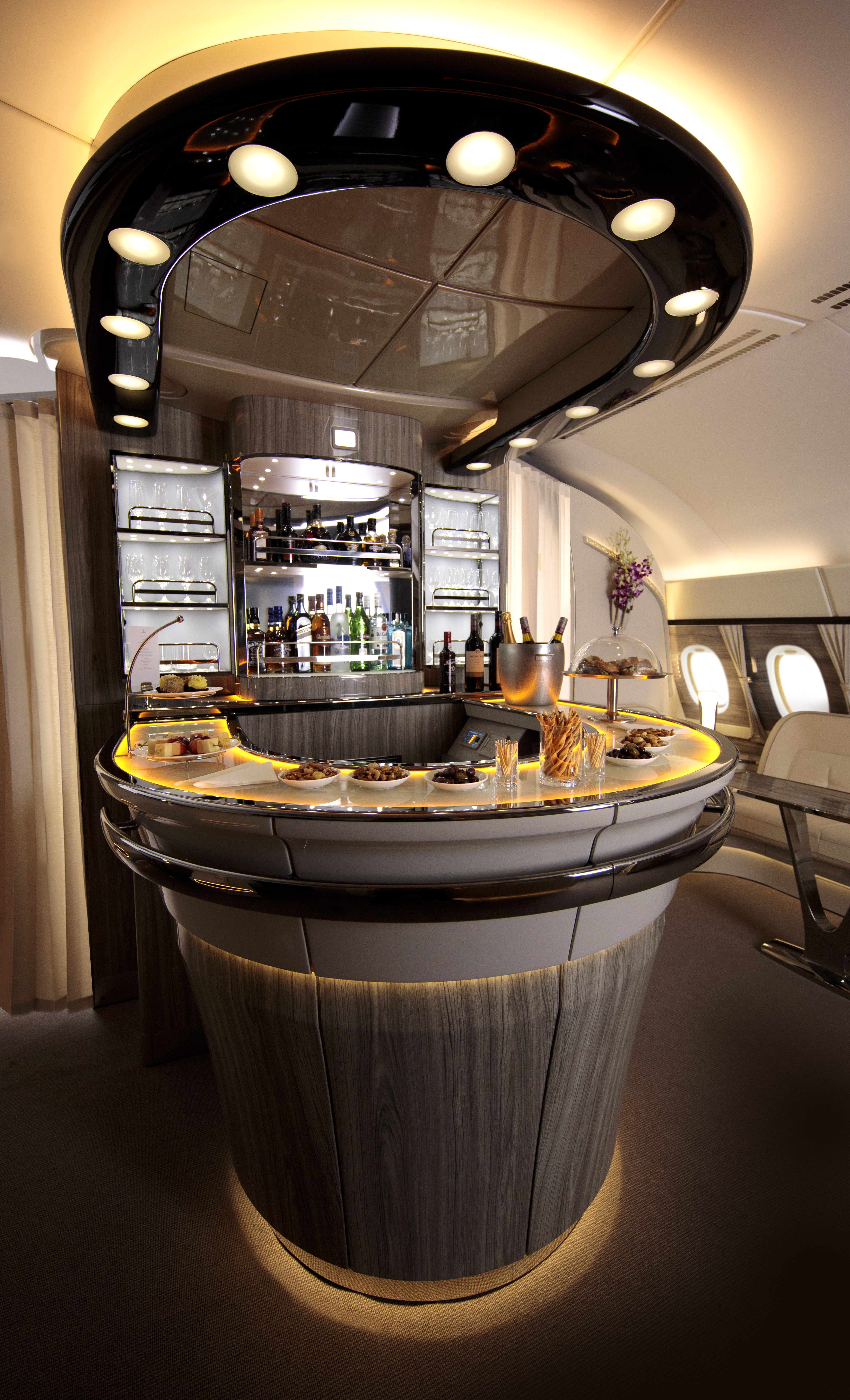
The bar onboard an Emirates Airbus A380. Will we look back on the current decade as a bygone golden era of air travel? Image by Emirates
Certainly some airlines will continue to improve into the future, and new business models centered around transportation are likely to transform how we think about luxury travel in the future, but the traditional three class, hub-and-spoke airlines face strong headwinds in the near future that will likely erode much of the luxury that we’ve enjoyed for the past decade of airline resurgence.
Big Airlines Are Getting Too Complex For Their Own Good
Old airlines revel in building systems and business models around concepts of sometimes nauseating complexity. There are myriad boarding groups, frequent flyer tier levels, entire financial services departments, fare rules, revenue maximization algorithms, the dizzying idea of mileage-backed securities. Stacked up like a Jenga tower, all of the complex mathematical games big airlines use to maximize quarterly earnings become precarious in the long run.
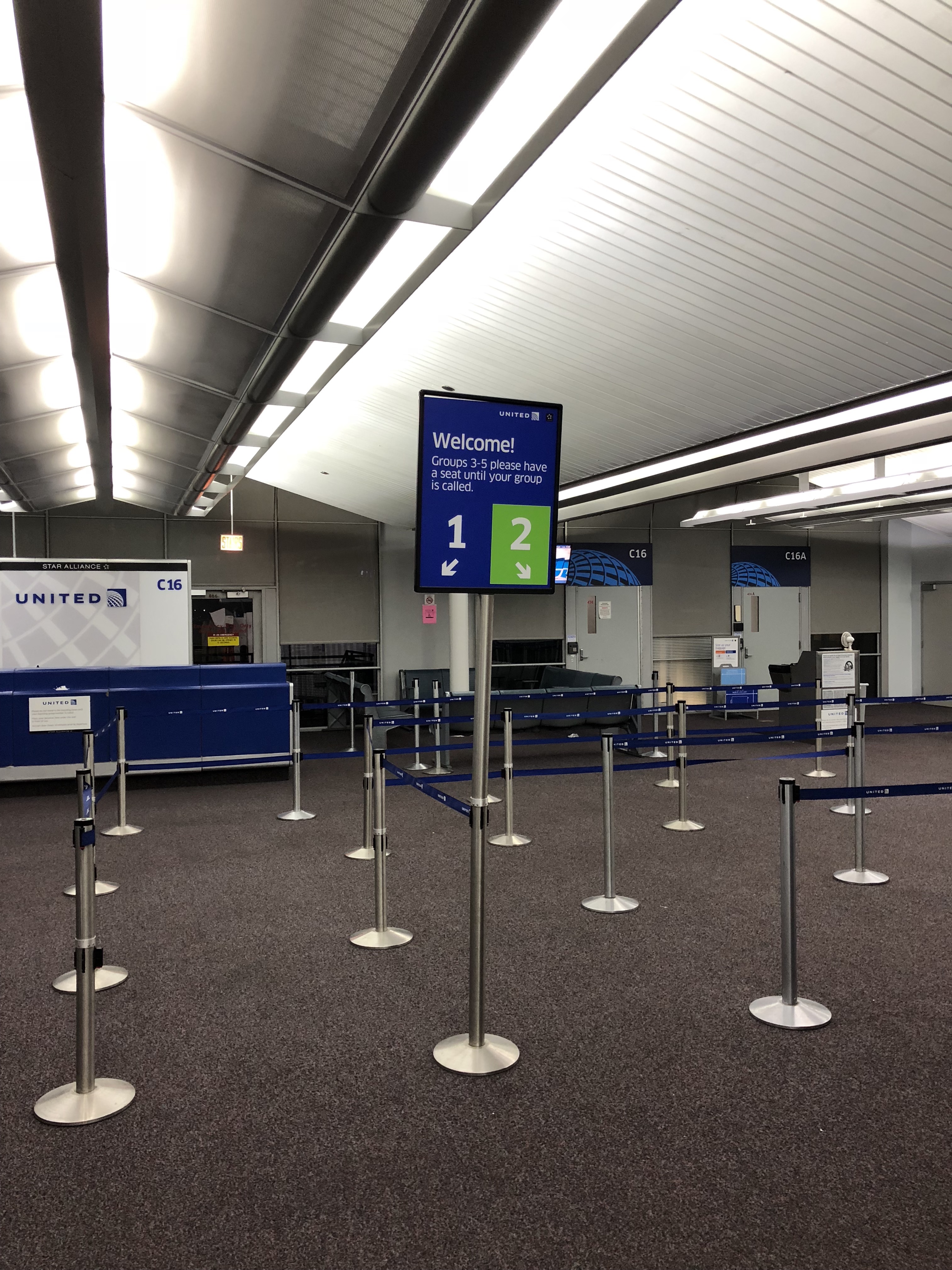
Complex business strategies — like having nine boarding groups — don’t always age well.
The leaning tower of points, perks and fare buckets has fallen in the past. Surely, it will again.
Consider, at the “big three” U.S. airlines, revenue growth in co-branded credit card products over the past year has far outpaced revenue growth from ticket sales. These airlines are now growing more in the financial services business than in the airline business.
New players with simple, inexpensive business models are easy to maintain and scale. These fierce startup airlines can easily undercut bigger competitors whose balance sheet assumptions rest atop a bespoke house of cards. Historically, supply-side shocks that affect operating costs (ahem, fuel, economic downturns) tilt the board in favor of upstarts.
Southwest Airlines was the first upstart airline built around an ethos of simplicity. The airline started at the beginning of a long downturn in the airline industry, beset by the structural changes that came with deregulation.
Once a one-off Texas operation, Southwest was so successful in capturing market share that it grew to overtake all other global airlines. The quirky Texas airline now carries more passengers than any airline in the world, and it doesn’t have any form of global network or even an international alliance. It functions in essentially the same way it did the year it launched service between Dallas Love Field and Houston Hobby Airport.
Clouds on the Atlantic Horizon
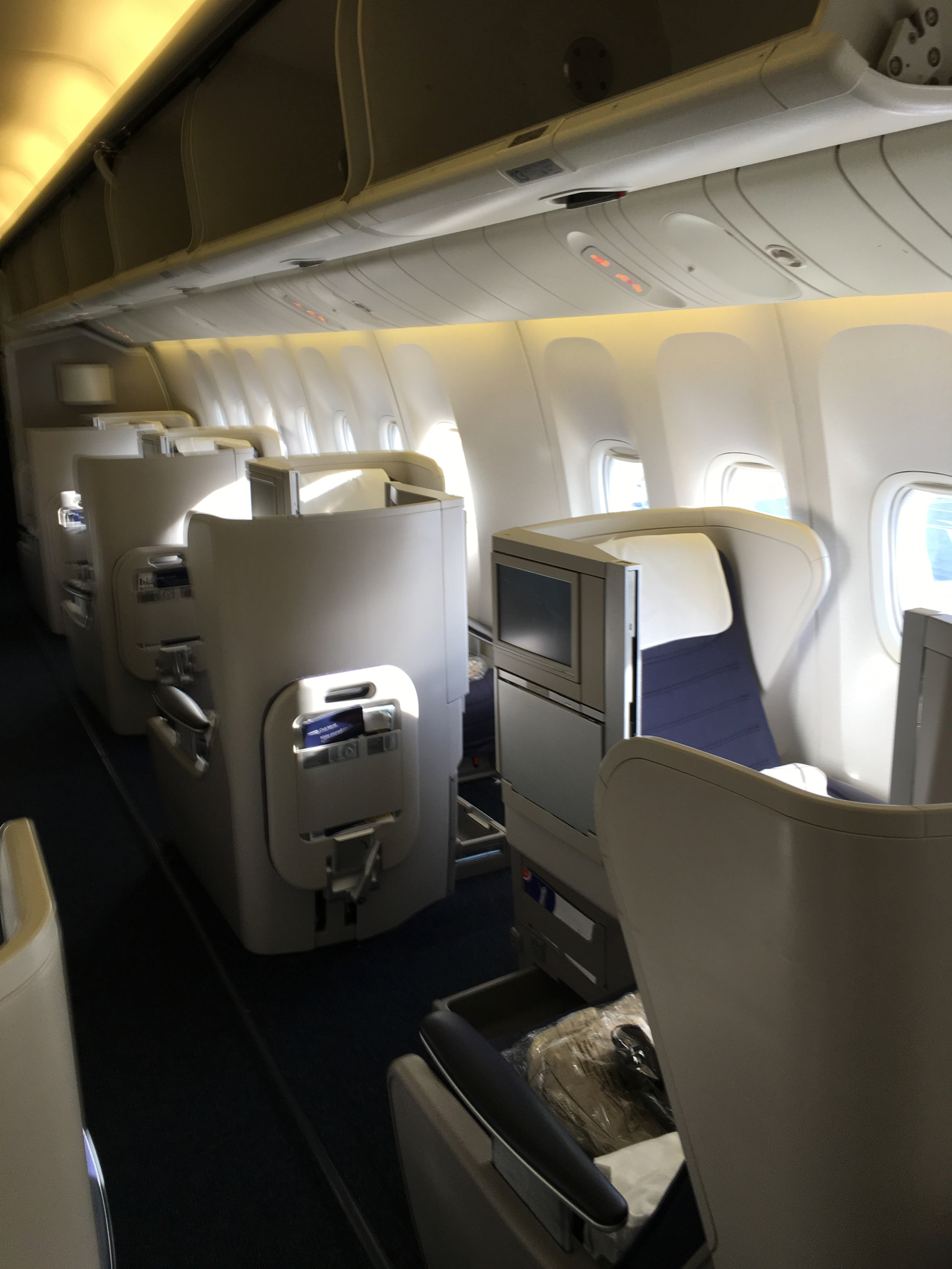
British Airways 777-200 Club World (Business Class) Cabin, once one of the best business class seats in the world, is now widely considered by frequent flyers to be one of the worst.
While U.S. airlines have enjoyed a remarkably stable market over the last decade, underpinned by mergers that have limited competitive forces, many of Europe’s largest air carriers are feeling an uncomfortable squeeze.
U.K. competitors British Airways and Virgin Atlantic, long pioneers of luxury and service, are now saddled with persistent fiscal concerns. These airlines are being squeezed in two directions by startup foreign competitors.
On one side of the equation are the high-gloss Emirati carriers, Emirates Airline, Etihad Airways and Qatar Airways. These young airlines, benefactors of heavy government subsidy, have lured away discerning and monied flyers in lucrative Europe to Asia and Middle East markets.
On the other end of the bracket, simple, cost-effective upstart airlines like Norwegian Air Shuttle and Primera Air are winning younger travelers and leisure travelers. Big European airlines are now adjusting their economy products with basic classes and bag fees, mimicking discount airlines. This further adds complexity to their business model. The ensuing confusion is bound to frustrate flyers and further encourage the insurgent competition.
Market studies have found that many of the complex programs bigger airlines have designed to maximize revenue are actually turning off younger travelers. Many in this community were surprised to see JetBlue’s TrueBlue frequent flyer program beat out all others in J.D. Power and Associates’ annual study of loyalty rewards programs.
Despite the incredible value United’s MileagePlus program affords in the way of international long-haul business and first class flights, more American travelers seem to actually prefer the simpler, if much less rewarding, JetBlue program. United’s program, coveted by travel hackers, finished dead last in the J.D. Power survey.
Let The Service Cutbacks Begin
United had a mimosa cart, then it didn’t. There were meals on Chicago flights, then there weren’t. Virgin Atlantic — for decades — offered free haircuts and spa services to business class passengers. Now they don’t.
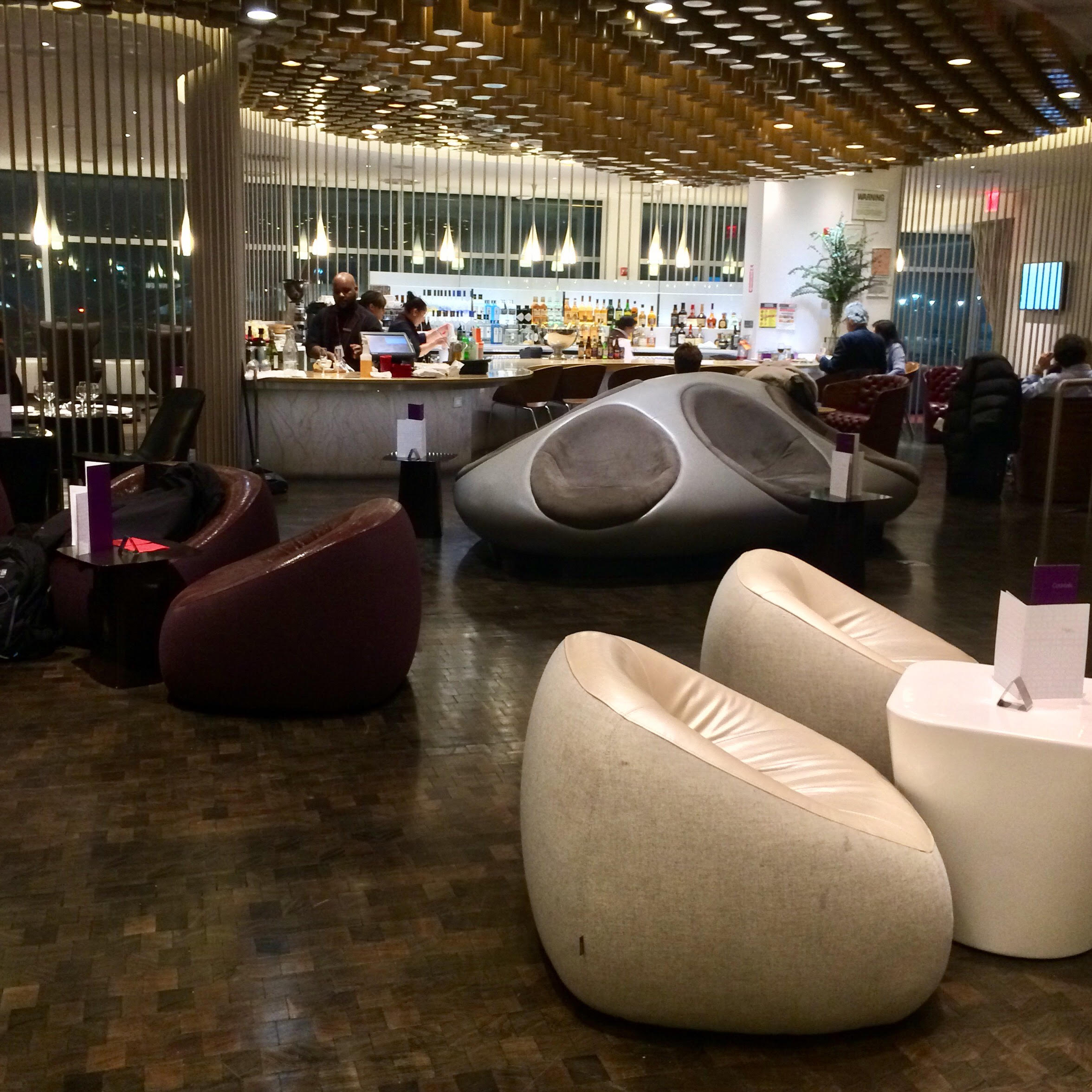
Virgin Atlantic used to offer free mens haircuts in their Clubhouse lounges. That ended earlier this year.
Pressured by immense competition for luxury flyers, not only from subsidized foreign carriers but increasingly accessible private alternatives, major airlines are forced to compete with one another on price and margin.
First class on long-haul flights is becoming an increasing rarity. As the business class seats are upgraded to compensate, they are fewer. American’s reconfigured Boeing 787-8 Dreamliners have fewer business class seats than some Boeing 737s.
Airlines that are investing in more lavish appointments are also scaling back inventories to help protect margins. Singapore Airlines’ new suites offer the most personal space of any commercially available seating product, ever. There are also just six of them on the Airbus A380, half the number under the previous suite configuration.
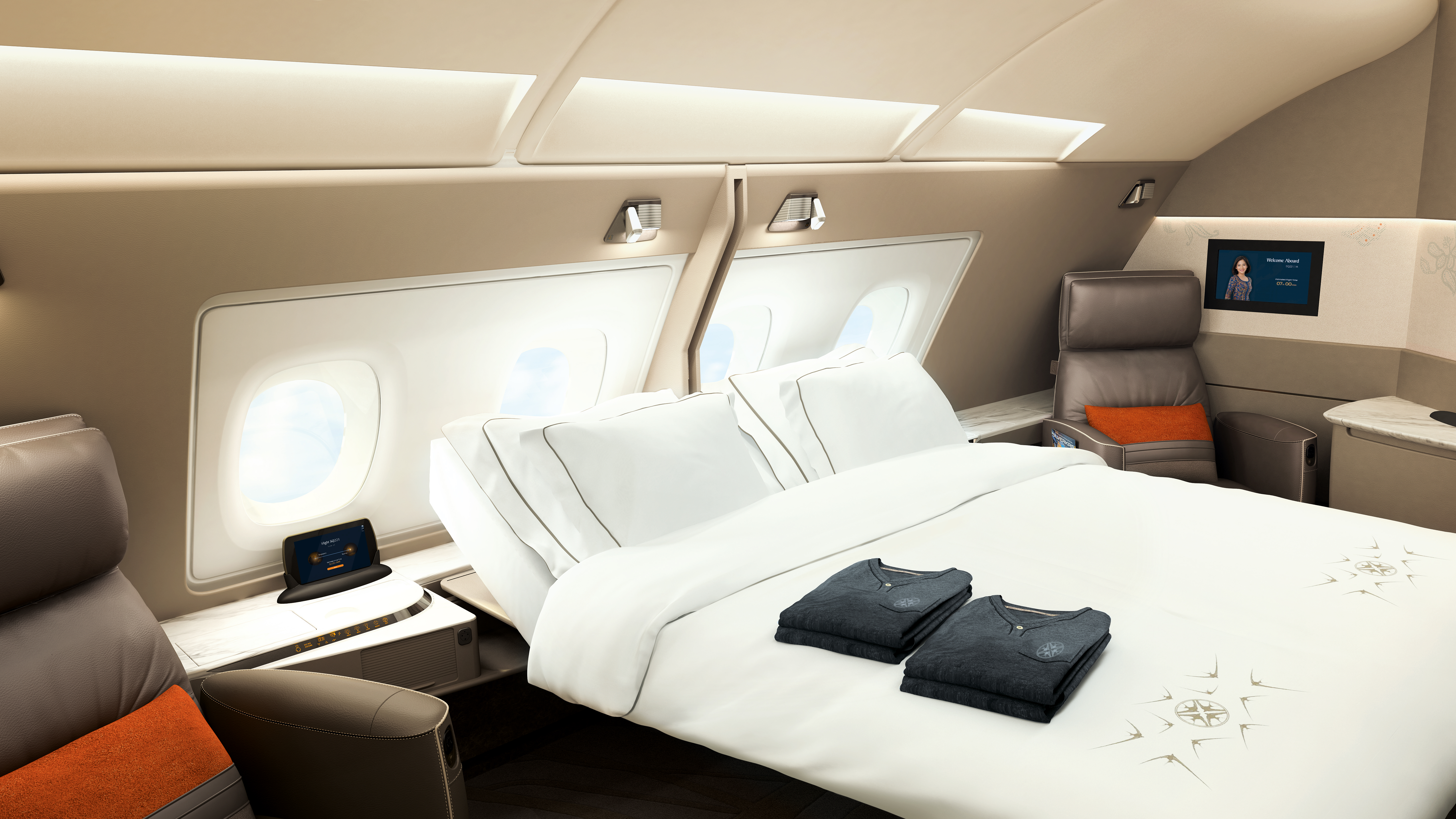
Singapore Airlines’ new suites are larger, but much sparser than their predecessors. Image by Singapore Airlines
Many of the diligent travel observers in the Boarding Area cohort have documented slow, but steady premium service cutbacks in the past two years on airlines like Cathay Pacific, which is facing pressure from Middle East competitors, as well.
And while Emirates has successfully grown its Dubai hub into one of the largest in the world — turning a profit in the meantime — it is now constrained by growing labor shortages. Rival Etihad has reduced service frequencies to many U.S. destinations.
Small Planes: Advantage Small Airlines
The Airbus A380, a platform for the most lavish onboard cabins in history, is an endangered species. Meanwhile, small, single-aisle jets are now flying across vast oceans.
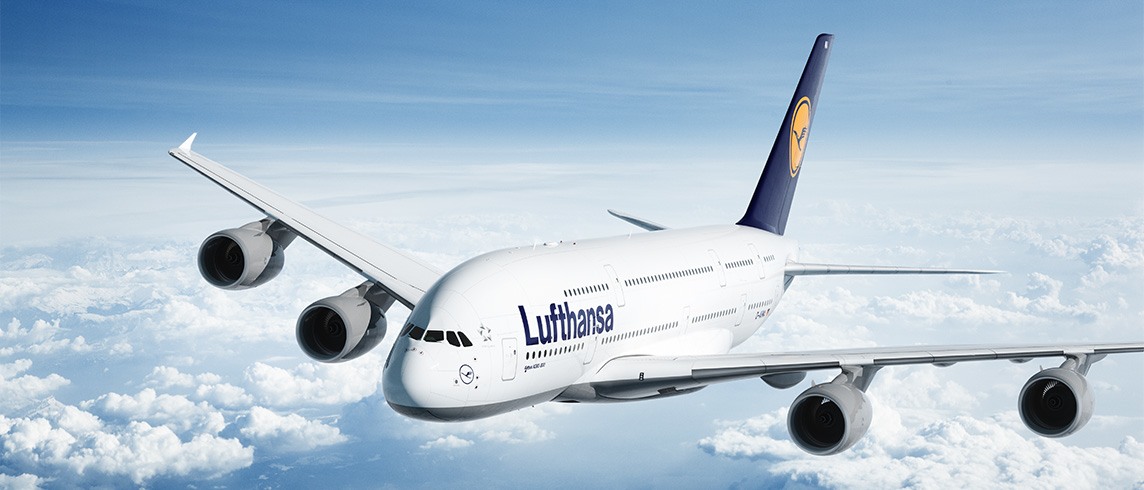
Endangered whale: Airbus was considering canceling the A380 program altogether earlier this year until Emirates orders saved the day.
Consider new flights operated by Brazillian carrier Gol on Boeing 737 MAX 8s, between Brasilia, Miami and Orlando. Such a service would have been unthinkable just five years ago, when the only aircraft capable of covering such a distance were large, widebody jets.
The overhead cost of large aircraft and marketing challenges associated with filling hundreds of seats were previously entry barriers for smaller airlines. No more. The walls are coming down.
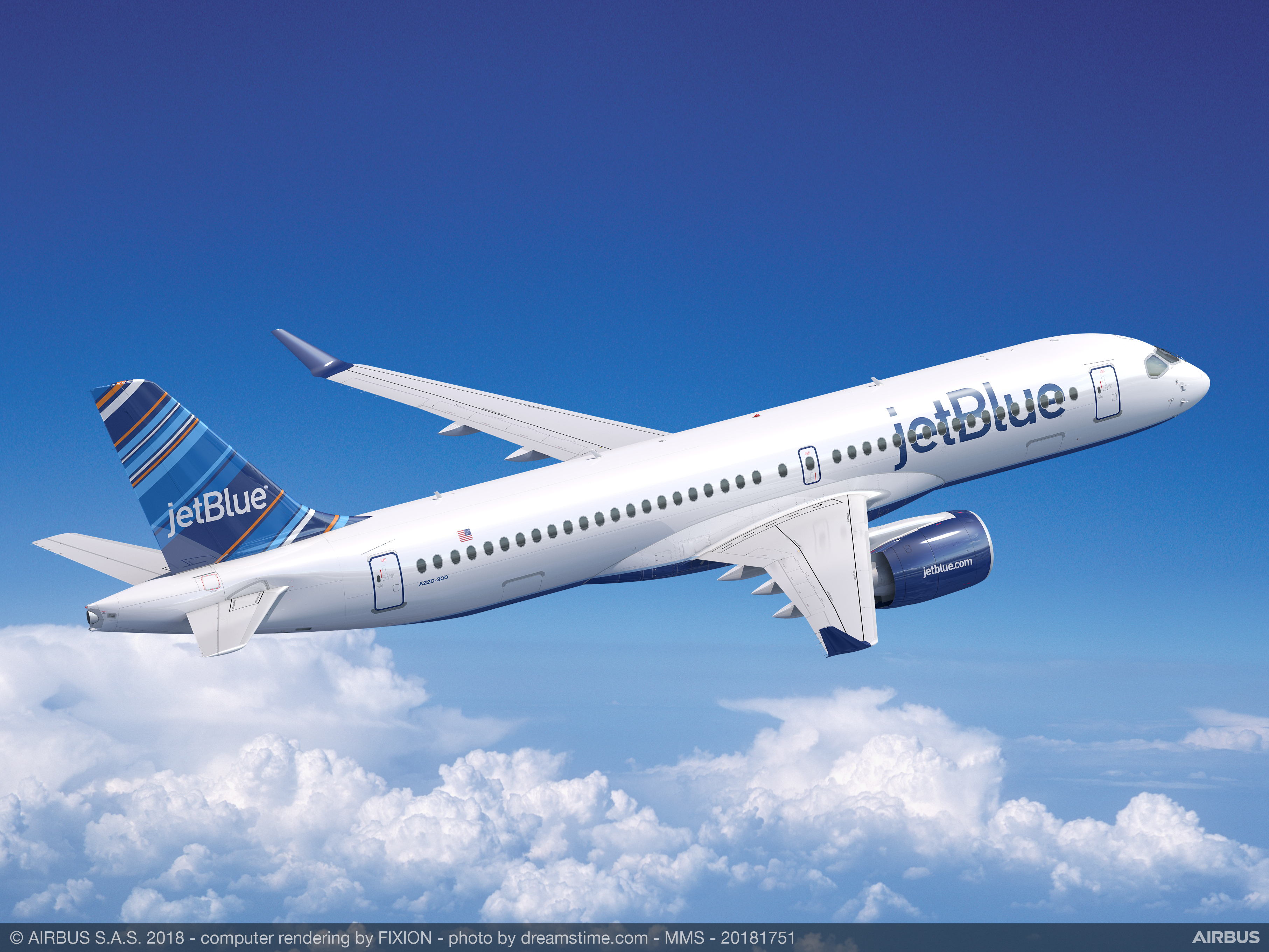
Your new ride across the Atlantic: the diminutive, quiet and efficient Airbus A220.
JetBlue now plans to fly across the Atlantic ocean using Airbus A220s, further challenging the likes of British Airways, Virgin Atlantic and others. Transoceanic travel, once the exclusive realm of those with the gumption, vision and overhead to acquire jumbo jets, can now be accomplished more cheaply and more reliably on planes the size of large regional jets.
This trend favors smaller, simpler airlines that are likely to lure with price, not luxury.
Upshot
The past decade in travel has been incredible. Boarding Area has served as a platform of documentary of this era, leveraging perks, benefits and rewards to enjoy luxuries aloft that approach the realm of royalty.
I’m not arguing that 2018 is a bad time to fly. Onboard entertainment and seating are at never-before-reached levels on all three major U.S. airlines.
But the future looks quite different. I expect, in another 10 years time, we are going to be flying on smaller planes, perhaps on smaller airlines geared to compete on a price-first basis.
I certainly wouldn’t count on booking an abundance of first class suites using credit card points in the year 2025.
The responses below are not provided or commissioned by the bank advertiser. Responses have not been reviewed, approved or otherwise endorsed by the bank advertiser. It is not the bank advertiser's responsibility to ensure all posts and/or questions are answered.
6 comments
Nah, in the true principles of capitalism, air travel won’t get shitty for all, just the disparity will grow.
You can get your Amex Centurion lounges and Medallion recognition and Dom/Krug.
You can also get Basic Econ and 27 inches on Spirit. The difference between now and the ‘golden age’ if aviation is the existence of the latter.
If airlines aren’t pushing profits, they’re gonna cut from those who can handle the burden, and thats usually the leisure travel masses who are already jaded to air travel. Your 150k redemptions will be safe, no worry.
That Dom/Krug is being downgraded as we speak… Your Centurion lounge is full and the buffet has been picked to the pickled corn salad.
Agree with Alvin. If history teaches a lesson, it’s that there will always be a mass upscale market in travel. The 1% (minus the .001% who own their own means of transportation) is still 70MM people; they will travel in style and pay for separation from the hoi polloi. The decently wealthy, those who can pretend to be, and those with a once-in-a-lifetime aspiration will all provide a market for extreme comfort and style. The back of the plane indeed will become the whole plane for infrequent travelers once narrow-body transoceanic air travel is a thing. But the premium seats will still exist on a lot of airlines, even if business class becomes the new first class.
In 10 years, private jet shares will have fully cannibalized the transatlantic first class market. The forthcoming supersonic products will take the rest.
The parties with more to fear are the travel industrial complex in most European Countries. With the arrival of truely intercontinental versions of the 737 and 320 carriers will be able to adapt aircraft size to “ready to pay” passengers. The low fares offered today just to help fill widebody aircraft will be gone. Business travelers will pay their way as always but will no longer be accompanied by hordes of bargain passengers. There is an elastic component to travel, after all.
I foresee carriers still making profits while gross wll decline. RPM will increase. Airports will be less hectic on peak periods while airport revenues will be under pressure.
Make no mistake, narrowbody aircraft that can reliably fly both directions nonstop will be as disruptive as UBER.
I concur. In everything you see a peak. Westjet flies the 737 St. Johns to London. But first came the 757s with the ETOPs changes doing TATL runs. Horrible to be in a single aisle aircraft for more than 3 or max 4 hours. A year or so ago I flew Qantas F to the U.S. A380. Cherished every single minute of it. When one considers the space, food, service, quiet up front you have that underlying feeling it can’t last – and I don’t mean just that flight. Also same on a recent LH 747-8 in F cabin, but on a J award. Loved every single centimeter of space. Aviation is a wonderful thing in alleviating the burthens of ground or maritime travel. Ten hours from the West Coast to Europe. Imagine 150 years ago: Months. So we are in many ways spoilt, but we live in this era, the here and now, and it’s not wrong to have adapted to this age – and not to the last. Enjoy it while it lasts.